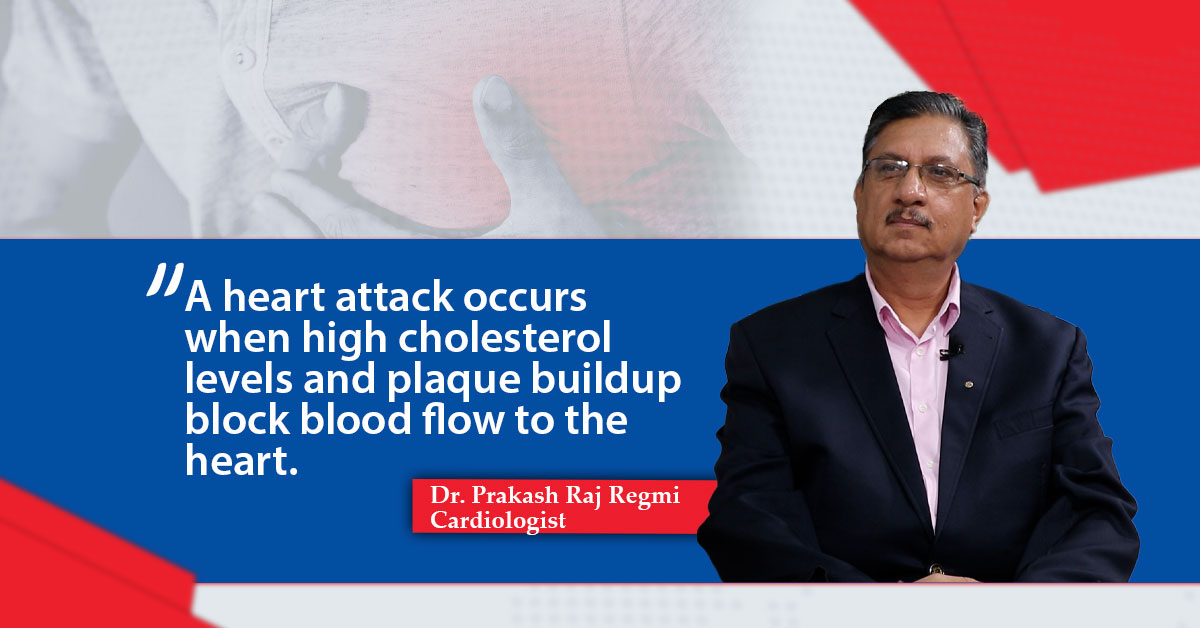

KATHMANDU: A heart attack occurs when blood supply to a part of the heart muscle is blocked, usually due to a blockage in a nearby artery.
It is a medical emergency that requires immediate hospital treatment. Symptoms include chest pain with heaviness, sweating, nausea, tightness, and shortness of breath.
Nepalnews had the privilege of speaking with Dr. Prakash Raj Regmi, a pioneering cardiologist and professor in Nepal, recognized for his work in controlling non-communicable diseases. Here are the excerpts from the conversation:
What is a heart attack, and what causes it?
Heart attacks are the leading cause of death worldwide, killing approximately 20 million people annually, with 30,000 fatalities each year in Nepal alone.
The heart is a muscular organ whose main function is to pump blood, carry oxygen and nutrients to the body, and remove waste products via the lungs.
A heart attack occurs when high cholesterol levels and plaque buildup block blood flow to the heart.
How can you identify if you’re having a heart attack? What are the early signs and symptoms?
During a heart attack, many people experience discomfort or heaviness in the chest, often described as pressure, tightness, or pain.
This pain may start in the chest and radiate to areas like the shoulders, neck, left arm, back, or even the jaw. Other symptoms include sweating, nausea, vomiting, dizziness, shortness of breath, coughing, trouble sleeping, palpitations, and weakness.
How can you distinguish between gastric pain and heart attack pain?
Gastric pain is typically related to food, hunger, or digestive issues like heartburn, upper chest pain, bloating, and belching.
It occurs when eating greasy or spicy foods. Gastric pain is not usually linked to physical activity or exertion.
In contrast, heart attack symptoms include sweating, nausea, dizziness, shortness of breath, and chest pain that feels like heaviness or tightness. This pain can spread to other body parts like the neck, jaw, back, or abdomen.
What are the main causes of heart attacks?
The leading causes of heart attacks include smoking, stress, obesity, and an unhealthy lifestyle, which contribute to the buildup of plaque in coronary arteries. This plaque narrows the arteries, reducing blood flow to the heart.
Why are heart attacks increasing among people under 40?
Heart attacks are becoming more common among younger individuals due to smoking, excessive alcohol consumption, physical inactivity, stress, poor diet, and obesity. These factors contribute significantly to the risk.
What are the risk factors for a heart attack?
Risk factors include family history, a diet high in saturated fats, high blood pressure, high cholesterol, obesity, tobacco use, diabetes, stress, smoking, excessive alcohol consumption, and older age.
How can you prevent a heart attack?
To help prevent heart attacks, focus on regular exercise, managing stress, maintaining a healthy weight, controlling cholesterol and blood pressure, quitting smoking, and choosing foods low in saturated and trans fats.
A diet rich in fiber, fruits, vegetables, and whole grains is also essential.
Are there complications of a heart attack?
Yes, heart attack complications can occur, including cardiogenic shock, heart rupture, heart failure, arrhythmias, stroke, blood clots, cardiac arrest, and pericarditis.